Welcome to a playful and educational exploration of the dazzling world of Raphael, the artist who gave us timeless masterpieces and a touch of Renaissance magic. In this colorful journey, we’ll take you through ten of Raphael’s paintings, not just as mere art but as vibrant stories that leap off the canvas.
1. The School of Athens: Where Philosophers Throw a Rave

| Date Completed | 1509-1511 |
| Dimensions | Approximately 500 cm × 770 cm |
| Location | Vatican City |
Hold onto your togas, folks! We’re stepping into a room where philosophers throw a party like no other. “The School of Athens” isn’t just a painting; it’s a full-blown intellectual fiesta. Created between 1509 and 1511 in Vatican City, this fresco takes us back to ancient Greece. Here, Raphael plays host to a symposium of the greatest minds in history. Think of this artwork as a celebrity hangout of the greatest thinkers.
2. Madonna of the Chair: Where Moms Get Their Shine
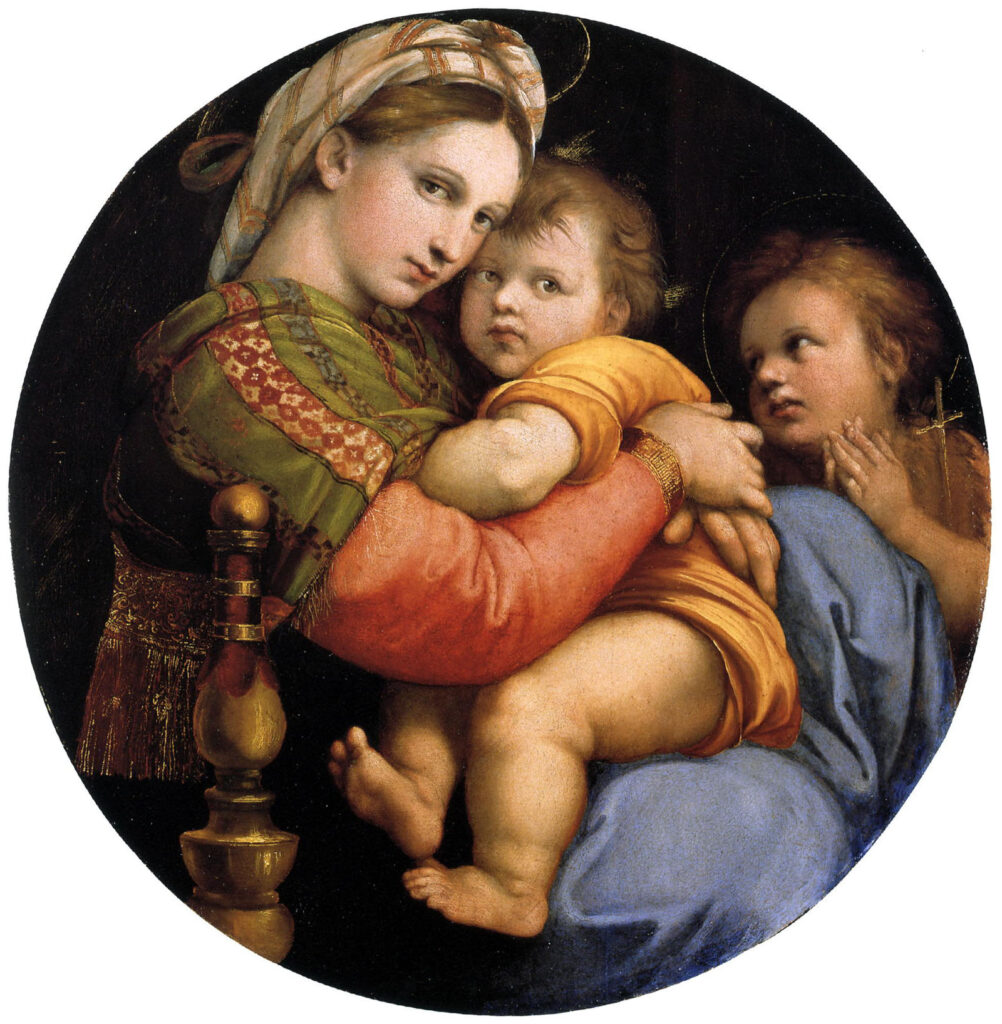
| Date Completed | 1513-1514 |
| Dimensions | About 71 cm × 71 cm |
| Location | Florence, Italy |
Who said motherhood can’t be glamorous? In “Madonna of the Chair,” Raphael proves that even super-busy moms can shine. Painted between 1513 and 1514 in Florence, this artwork showcases the Virgin Mary, holding baby Jesus and accompanied by St. John the Baptist. It’s like a Renaissance playdate. Madonna’s the queen bee, and her squad of adorable kids ensures her shine is intact. It’s like an ancient version of a mommy blog – stylish, timeless, and oozing with love.
3. The Sistine Madonna: Angels on Cloud Nine

| Date Completed | 1512-1513 |
| Dimensions | Approximately 269 cm × 201 cm |
| Location | Dresden, Germany |
We’re packing our bags and hopping over to Dresden, Germany, for a celestial treat. “The Sistine Madonna” is like a dose of angelic cuteness. Picture this: the Virgin Mary holding the infant Jesus, and two cherubic angels gazing up with expressions that say, “We’ve got front-row seats in heaven.” Painted between 1512 and 1513, this Raphael’s masterpiece is a true work of angelic art, reminding us that even angels need their moment in the limelight.
4. Transfiguration: Jesus’s Epic Makeover

| Date Completed | 1516-1520 |
| Dimensions | About 405 cm × 278 cm |
| Location | Vatican City |
Time for a makeover, folks! We’re back in Vatican City, and it’s time for “Transfiguration.” No, it’s not a reality TV show – it’s a stunning portrayal of the biblical transfiguration of Jesus. Painted between 1516 and 1520, Raphael takes us on a spiritual rollercoaster. At the top, you’ve got Jesus all aglow and floating mid-air, looking like he just stepped out of a celestial spa day. Down below, the disciples are all, “Whoa, what’s happening?” It’s a masterpiece with a divine glow-up.
5. Portrait of Baldassare Castiglione: Renaissance’s Dapper Diplomat
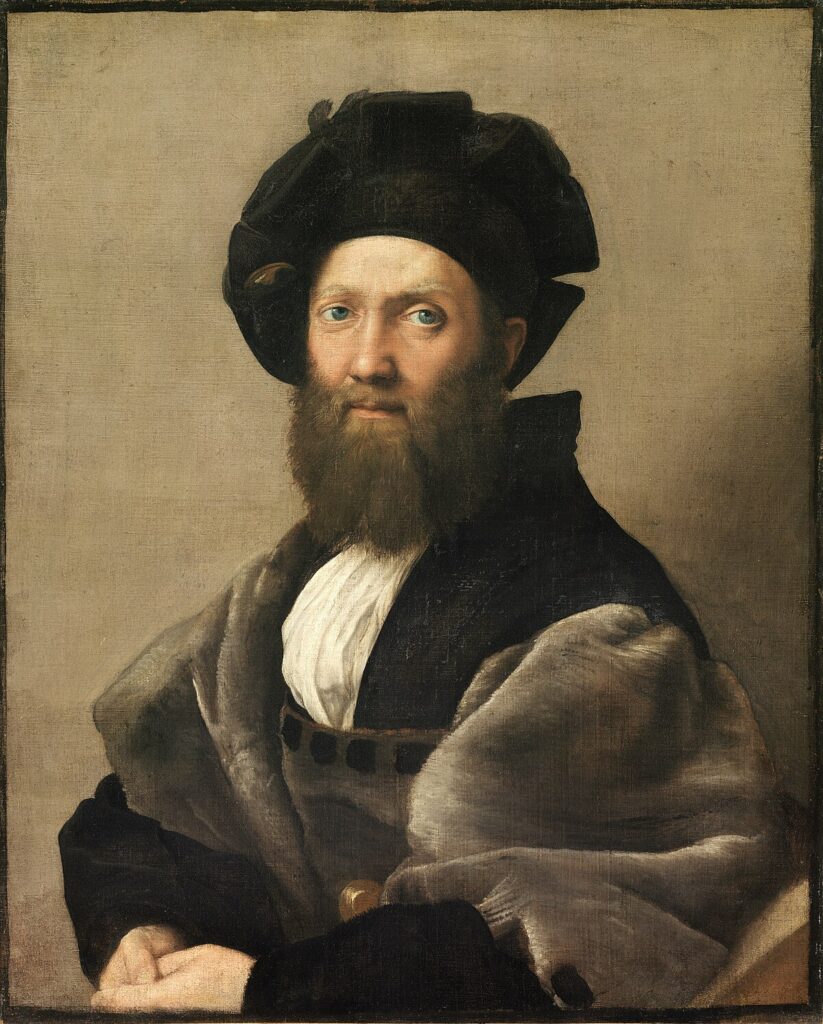
| Date Completed | Around 1514-1515 |
| Dimensions | Approximately 82 cm × 67 cm |
| Location | Paris, France |
Ladies and gentlemen, it’s time for a rendezvous with dapper diplomacy. Raphael paints a portrait that’s so suave, it could out-charm James Bond. “Portrait of Baldassare Castiglione,” created around 1514-1515 in Paris, France, gives us a glimpse of an Italian diplomat and author. Castiglione looks like he’s about to drop some profound wisdom over a glass of fine wine. Raphael’s brushstroke magic captures not just the likeness but the charisma of his subject. It’s like a 16th-century GQ cover shoot.
6. St. George and the Dragon: Mythology’s Ultimate Showdown
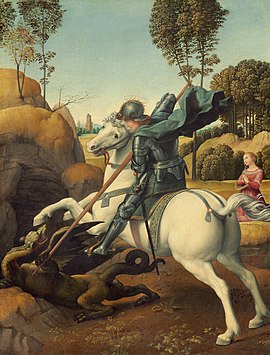
| Date Completed | Around 1504-1506 |
| Dimensions | Approximately 28 cm × 21 cm |
| Location | National Gallery of Art, Washington, D.C. |
Hold onto your swords and shields because it’s time for a face-off in Washington, D.C. “St. George and the Dragon” is the ultimate showdown between good and evil, painted around 1504-1506. St. George, our knight in shining armor, is all set to rescue the damsel from the fiery breath of a fierce dragon. It’s like a medieval action movie, with a dash of chivalry and a dollop of bravery. Raphael gives us mythological thrills that still pack a punch today.
7. La Belle Jardinière: Holy Picnic in Paris

| Date Completed | 1507 |
| Dimensions | Roughly 122 cm × 80 cm |
| Location | Louvre Museum, Paris, France |
Now, we’re in Paris, and it’s time for a holy picnic in “La Belle Jardinière.” Picture this: the Holy Family chilling in a serene garden, with the Virgin Mary, the Child, and St. John the Baptist. It’s like a family outing with a divine twist. Painted in 1507, Raphael creates a scene of grace and harmony. The Holy Family could be enjoying a snack, or they could be contemplating the mysteries of the universe. It’s a garden party with a touch of heavenly splendor.
8. The Alba Madonna: A Heavenly Playdate in Washington, D.C.
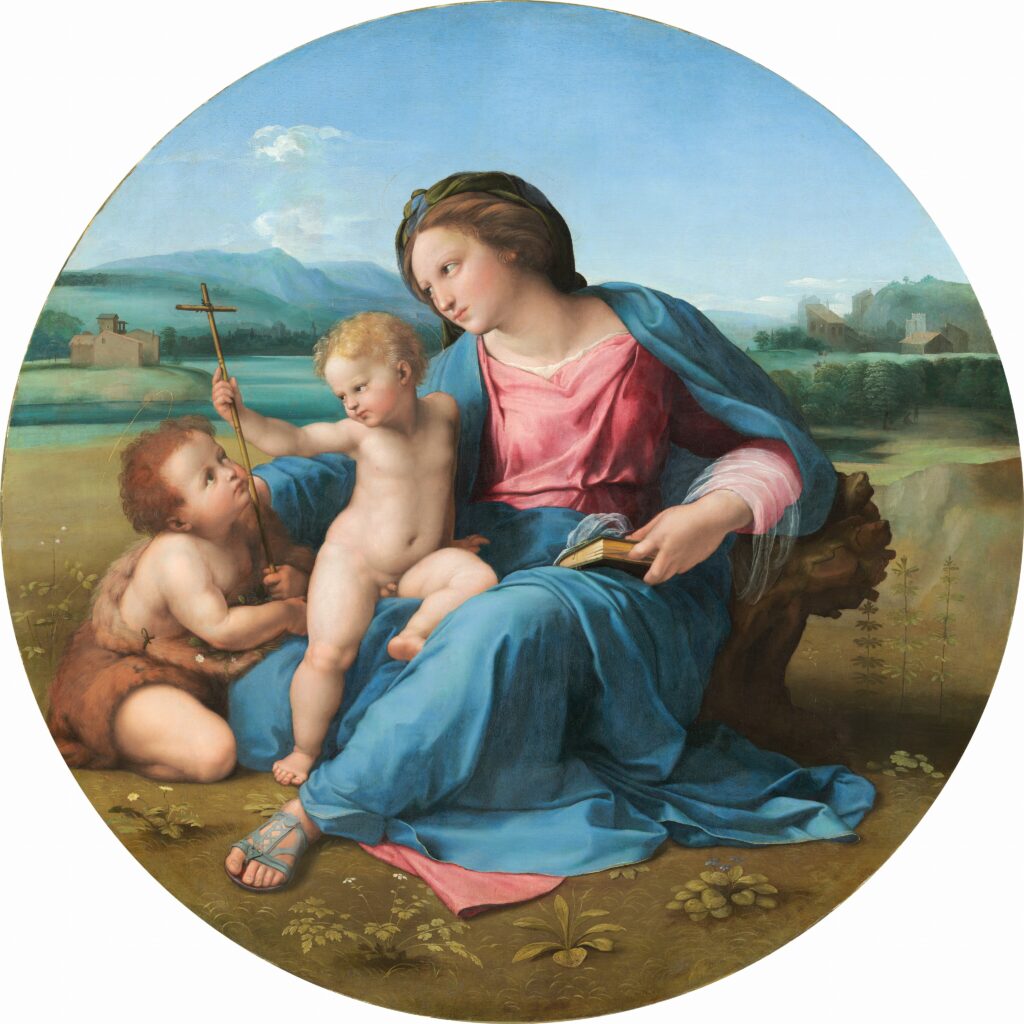
| Date Completed | Around 1510 |
| Dimensions | About 94 cm × 75 cm |
| Location | National Gallery of Art, Washington, D.C. |
We’re back in Washington, D.C., for a heavenly playdate. “The Alba Madonna” is like a serene rendezvous between the Virgin Mary and the infant Jesus. Painted around 1510, it’s a testament to Raphael’s ability to create harmony on canvas. The Virgin Mary is radiant, and baby Jesus is like a little cherub. They’re probably discussing toys, baby talk, or the secrets of the universe. It’s a moment of pure, timeless elegance.
9. The Entombment of Christ: A Holy Embrace in Rome

| Date Completed | Around 1507 |
| Dimensions | Approximately 184 cm × 176 cm |
| Location | Galleria Borghese, Rome, Italy |
Our path leads us to Rome, Italy, where we witness “The Entombment of Christ.” This painting dives deep into the emotions surrounding the burial of Christ. It’s like a scene from a Shakespearean tragedy, with deep emotions, profound thoughts, and spiritual contemplation. Raphael creates a moment of reverence that invites viewers to ponder the profound significance of the event. It’s not just a painting; it’s a spiritual journey.
10. The Marriage of the Virgin: Cupid’s Cathedral in Milan
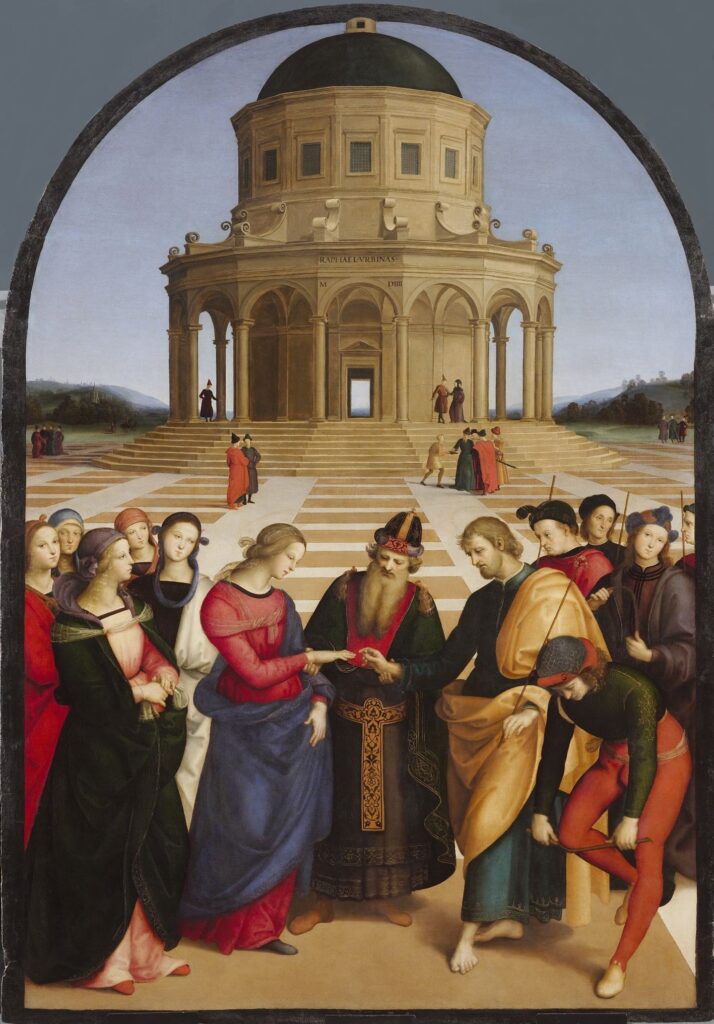
| Date Completed | 1504 |
| Dimensions | Approximately 170 cm × 118 cm |
| Location | Pinacoteca di Brera, Milan, Italy |
Our artful adventure concludes in Milan, Italy, with “The Marriage of the Virgin.” This painting is like Cupid’s cathedral, with religious themes woven into an intricate tapestry of architectural and landscape elements. Painted in 1504, it’s an early glimpse of the greatness that would define Raphael’s career. It’s like a wedding invitation to the whole world, and everyone’s invited.
Frequently Asked Questions
What is Raphael most famous painting called?
The paintings by Raphael, such as Madonna in the Meadow (1505/06), School of Athens (1508–11), Sistine Madonna (1512–13), The Transfiguration (1516–20), and Portrait of Baldassare Castiglione (1514–15), are probably his most well-known works.
What is one of Raphael’s famous paintings?
One of Raphael’s most renowned depictions of mythology is The Triumph of Galatea. The sea nymph Galatea is depicted in the painting riding a chariot pulled by two dolphins.
What are the characteristics of Raphael’s artwork?
Raphael’s artwork is known for its harmonious compositions, graceful figures, and attention to detail. He was a master of perspective and used vibrant colors in his paintings.
How did Raphael influence the art world?
Raphael had a significant impact on the art world during the Renaissance. His innovative techniques and style inspired many artists who came after him. He elevated the status of painting as an art form and his works continue to be admired for their beauty and skill.
Conclusion
As we’ve strolled through the colorful world of Raphael, we’ve witnessed not just his technical brilliance but his storytelling finesse. Each Raphael’s painting tells an important story, conveys emotions, and sparks our imagination. They’re not just art; they’re adventures frozen in time. So, whether you’re an art enthusiast or just a curious soul seeking inspiration, take your own journey through Raphael’s masterpieces and experience the profound legacy of a true Renaissance maestro. It’s a world where angels and philosophers mingle, where moms shine, and where dragons meet their match. In Raphael’s world, art is not just something you see; it’s something you live. And that’s a masterpiece in itself.













